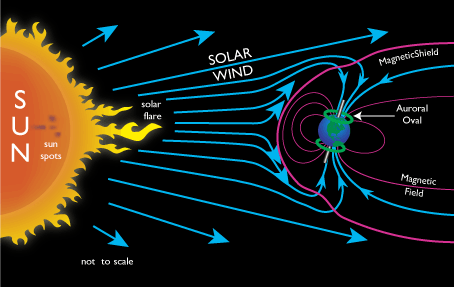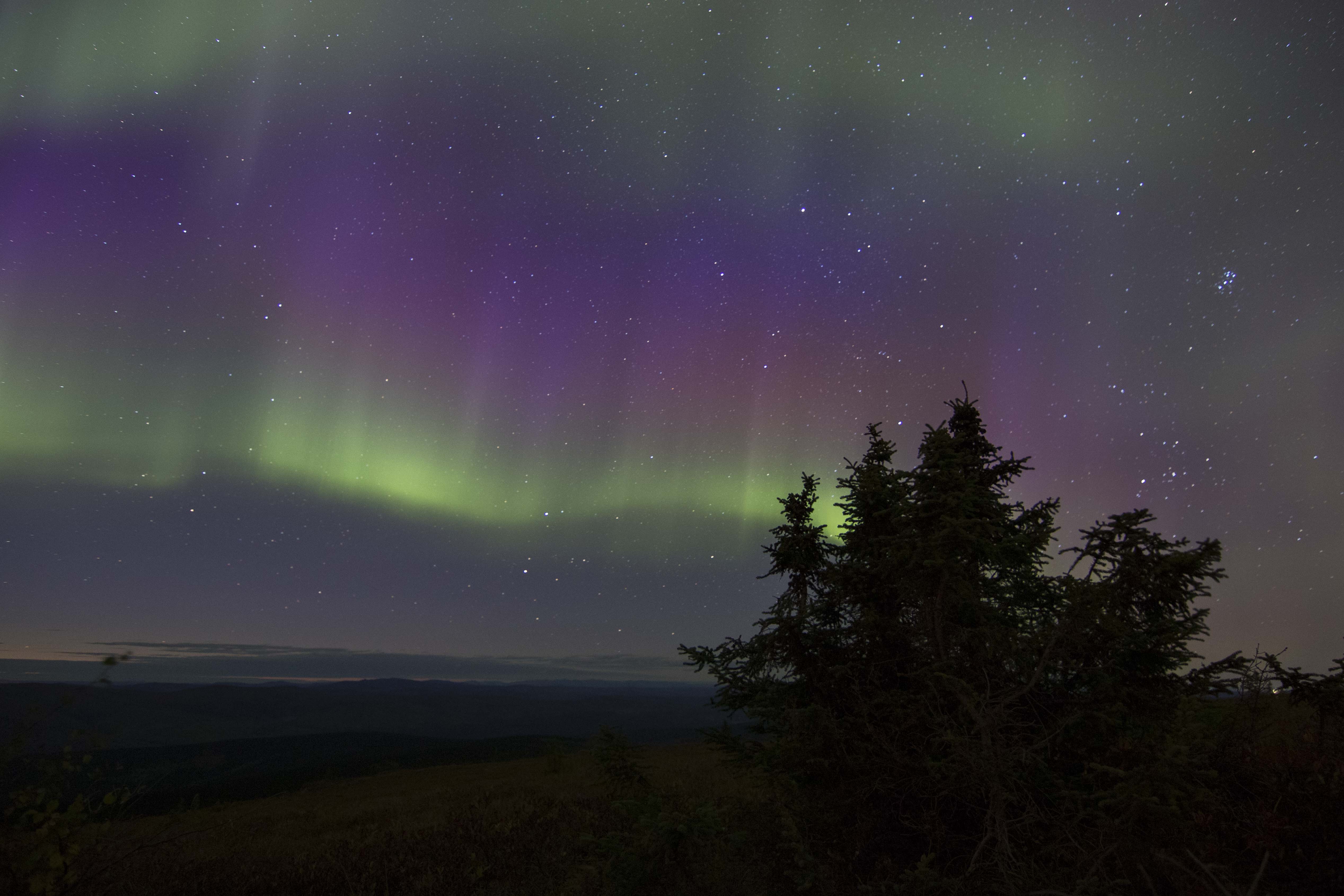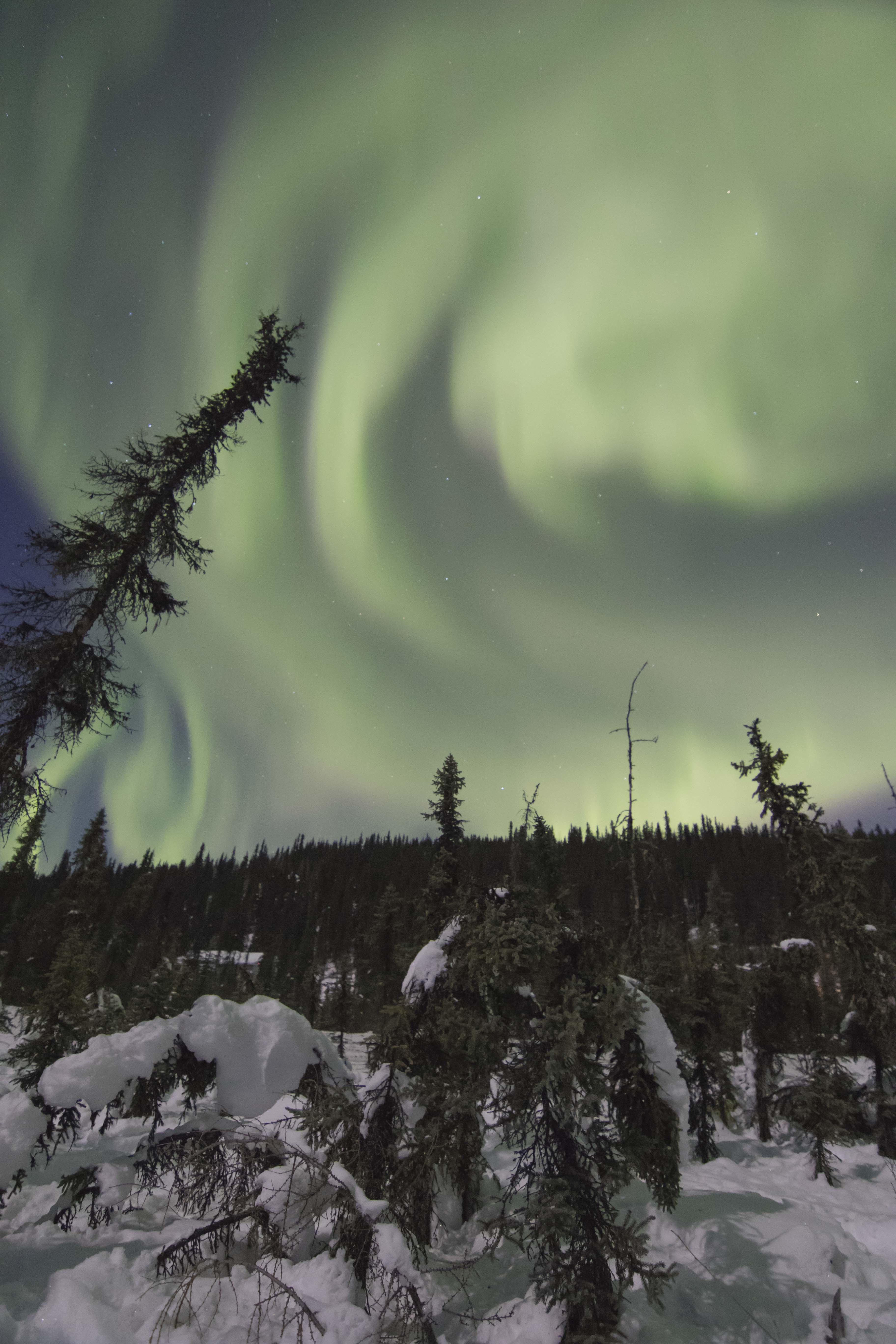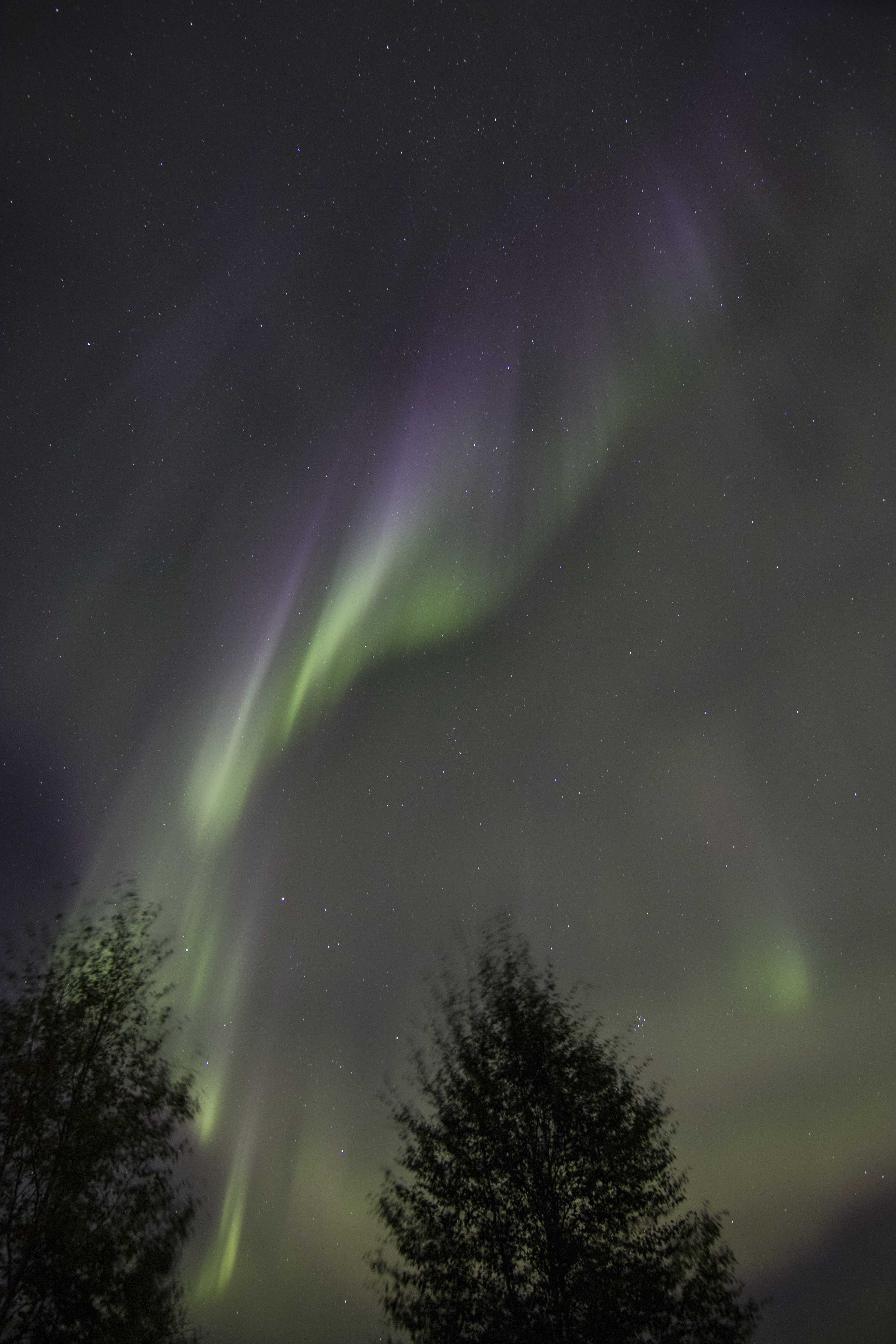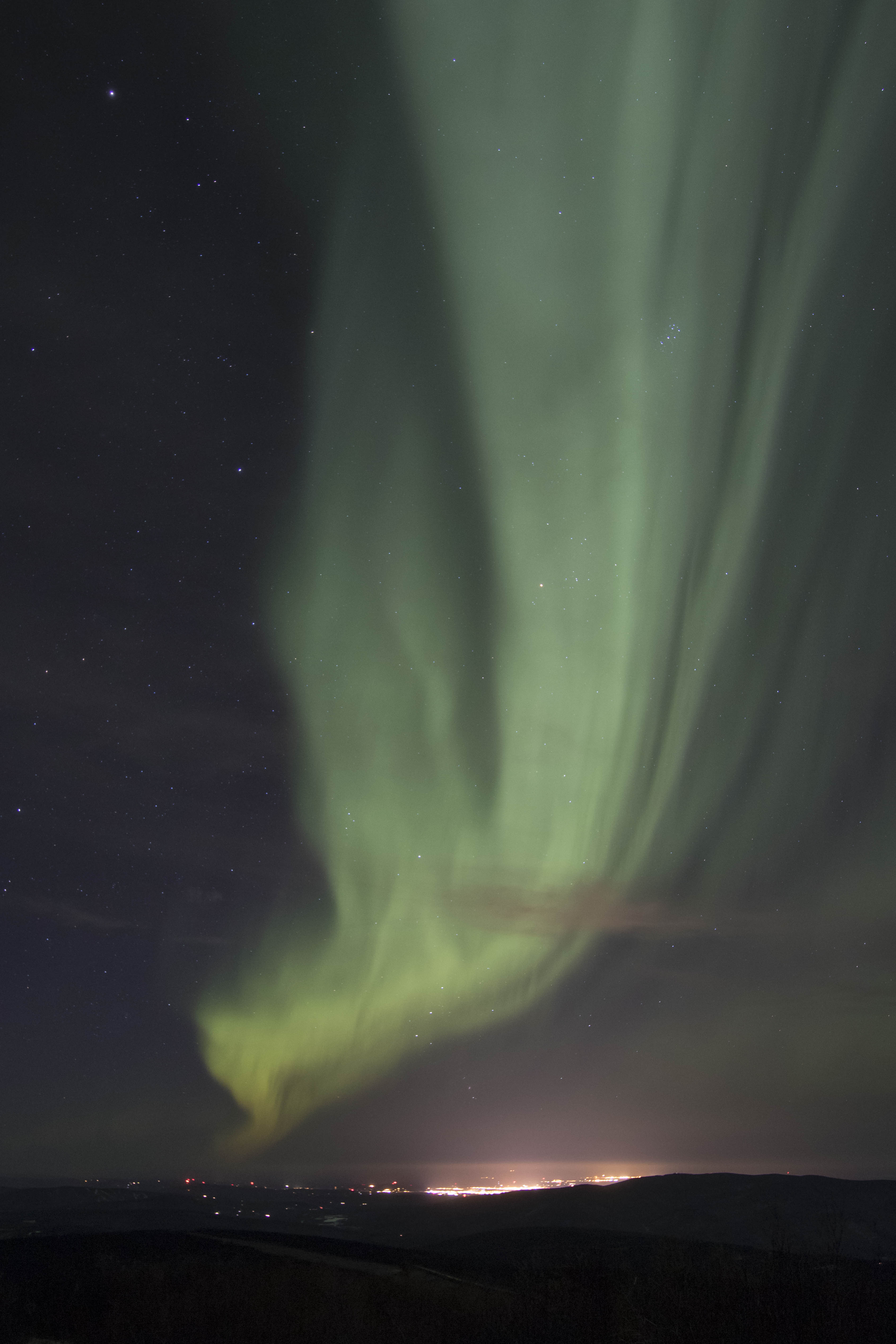Specific Physics of Nature/Wildlife Photography -- Aurora
Borealis
- The Aurora Borealis is one of my personal favorite
natural subjects to photograph.
- Essentially, the aurora is just molecules
in the atmosphere becoming "excited" or charged and then
returning to their normal state which emits a light depending
on the molecule and charge.
- The sun is what starts the aurora
process.
- The sun is constantly giving
off energy through different reactions like nuclear fusion.
This output of energy makes it way towards earth at an
astonishingly fast rate, hitting earth's magnetic field in as
little as 18 hours sometimes. We call these solar winds or
solar storms.
- When these solar winds/storms make
contact with the earth's magnetic field most are directed
around the earth, but some gets pushed towards the two poles
of the earth. They are directed this way because of how the
magnetic field is shaped. The magnetic field is meant to help
block harmful rays from entering the earth's atmosphere. This
is why most of the solar winds are blocked and redirected away
from earth and only a small portion gets pushed towards the
poles.
Viewing the Aurora
- Like I explained before, the earths magnetic field directs
the solar winds to the earth's poles. This makes the aurora
only visible around the earth's poles and a little distance
below. You will not see the aurora in a country such as
Ecuador which is along the equator.
- The optimal viewing of the aurora is along what we call the
"aurora oval" (pictured in the above image by the green
circles at each pole). This is the area along the earth's
poles where the solar winds get direct to, which make it prime
aurora viewing zones. Fairbanks is basically directly
underneath the aurora oval making for one of the best aurora
viewing areas around where the aurora tends to be seen
directly overhead.
- Places that are not in the aurora oval can still see the
aurora depending on how far they are below it and how strong
the aurora is, the aurora will just appear lower on the
horizon.
- Photographing the aurora is much different than just
viewing it. Typically, the camera sensor is more sensitive to
light than our naked eyes are, making it easier for the camera
to pick up the aurora when we cannot see it.
- This sensitivity to light, also makes the camera better to
capturing colors that our eyes may not be able to view.
Sometimes the aurora can appear as just a dull green or brown
to our eyes, but the camera may pick up blues, reds, purples,
etc...
- The best way to photograph the aurora is through a long
exposure. This is when you have the shutter open for a 'long'
period of time such as 1 - 30+ seconds. This allows the camera
to absorb all of the light possible to make a correct exposure
of the aurora.
